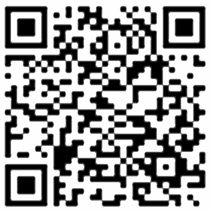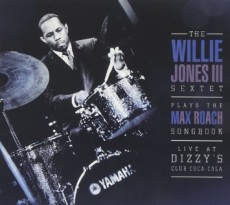
Daily Dose Of jazz…
Willie Jones III was born on June 8, 1968 in Los Angeles, California. His initial exposure to music came from his father Willie Jones II, an accomplished jazz pianist. With his guidance and inspiration the young drummer began studying with acclaimed drummers and music instructors. By the time he was in his teens her was performing with numerous distinguished musicians. He completed his training at California Institute of the Arts under the tutelage of Albert “Tootie” Heath.
As a co-founder of the group Black Note, he took the West Coast bop movement and gave it a hard swing, propelling them into first place in the John Coltrane young Artist Competition in 1991. He would go on to become a semifinalist the following year at the Thelonious Monk Jazz Drum Competition, and eventually the group released four albums. He has played, toured, and/or recorded with Milt Jackson, Horace Silver, Arturo Sandoval, Roy Hargrove, Peter Zak, Hank Jones, Cedar Walton, Herbie Hancock, Eric Reed, Kurt Elling and Wynton Marsalis Jazz at Lincoln Center.
Jazz musicians appreciate his exceptional speed and control together with his use of a wide range of textures that characterize most of his playing. He is a master of many styles and moves quickly and easily between bebop, big band, avant-garde, Latin jazz grooves, hard bop and swing.
He has released several albums under his own name as a leader and on his indie label, WJ3 Records. His music has been sampled, however, he has filed a lawsuit in 2014 against California rapper Kendrick Lamar for allegedly sampling “The Thorn” illegally in Lamar’s song Rigamortis. Drummer Willie Jones III continues to perform, record and tour both as a leader and sideman.
More Posts: drums
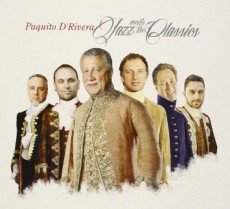
Daily Dose Of Jazz…
Paquito D’Rivera was born on June 4, 1948 in Havana, Cuba. He performed at age 10 with the National Theater Orchestra, studied at the Havana Conservatory of Music, and at 17, became a featured soloist with the Cuban National Symphony.
Through the Sixties and Seventies Paquito was dissatisfied playing under the constraints placed on his music by a communist Cuban government that described jazz and rock as imperialist music. After meeting with Che Guevara the idea of leaving Cuba became more than a thought. In early 1981, while on tour in Spain, he sought asylum with the American Embassy, leaving his homeland, wife and child behind in search of a better life with a promise to get them out.
With family support already in the States, D’Rivera settled into the New York jazz scene and became something of a phenomenon after the release of his first two solo albums, Paquito Blowin in 1981 and Mariel the following year. Throughout his career in the U. S. his albums have hit the top of the jazz charts and have shown his ability playing bebop, classical and Latin/Caribbean music. He is the only artist to ever have won Grammy Awards in both Classical and Latin Jazz categories.
Paquito also plays with the Ying Quartet, Turtle Island String Quartet, Mark Summer, Alon Yavnai, Yo-Yo Ma, as well as the National, London, Puerto Rico, Costa Rican and Simon bolivar Symphony Orchestras and the London and Florida Philharmonic Orchestras.
With his band, Paquito D’Rivera Quintet consisting of Peruvian bassist Oscar Stagnaro, Argentinean trumpeter Diego Urcola, American drummer Mark Walker and pianist Alex Brown they have won a Latin Grammy for Best Latin Jazz Album for Live At The Blue Note for a total of seven and has also won fourteen Grammy Awards.
Alto and soprano saxophonist, clarinetist, composer and bandleader Paquito D’Rivera has to date 72 albums as a leader and another 5 as a sideman playing with Dizzy Gillespie and Lalo Schifrin. He has received the National Medal of Arts, NEA Jazz Master, Jazz Legend Award, Two honorary Doctorates, and the Presidents Award from the IAJE amongst numerous others, continues to perform, record and tour.
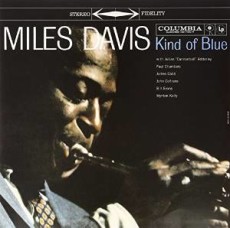
Daily Dose Of Jazz…
Miles Dewey Davis III was born May 26, 1926 in Alton, Illinois into an affluent family, father a dentist and his mother a blues pianist. They owned a substantial ranch in the Delta region of Pine Bluffs, Arkansas. When he was one years old the family moved to East St. Louis and it was between there and Pine Bluffs that his appreciation for music came out of the Black church.
His musical studies began at 13, when his father gave him a trumpet and arranged lessons with local musician Elwood Buchanan. He learned to play with out vibrato which gave him his clear signature tone. By age 16, Davis was a member of the music society and, when not at school, playing professionally first at the local Elks Club. At 17, he spent a year playing in Eddie Randle’s band, the Blue Devils and during this time, Sonny Stitt tried to persuade him to join the Tiny Bradshaw band, then passing through town. His mother insisted that he finish his final year of high school and he graduated from East St. Louis Lincoln High School in 1944.
In 1944, the Billy Eckstine band visited East St. Louis with Dizzy Gillespie and Charlie Parker in tow. Miles was brought in on third trumpet for a couple of weeks because the regular player, Buddy Anderson, was out sick. Even after this experience, once Eckstine’s band left town, Davis’ parents were still keen for him to continue formal academic studies.
However, In the fall of 1944, following graduation from high school, Davis moved to New York City to study at the Juilliard School of Music. His arrival marked a new chapter and he spent his first weeks attempting to contact Charlie Parker, against all advice even from Coleman Hawkins. Finally locating his idol, he became one of the cadre of musicians who held nightly jam sessions at Minton’s Playhouse and Monroe’s, both Harlem nightclubs. He was among future leaders of bebop Fats Navarro, Freddie Webster, J. J. Johnson as well as the established Thelonious Monk and Kenny Clarke.
Dropping out of Juilliard after asking permission from his father, Miles began playing professionally, performing in several 52nd Street bands led by Coleman Hawkins, and Eddie Lockjaw Davis. By 1945, he entered a recording studio for the first time, under the leadership of Herbie Field. This was the beginning of his many sideman recordings until 1946 when he recorded as a leader with the Miles Davis Sextet plus Earl Coleman and Ann Hathaway. Though a member of the groundbreaking Charlie Parker Quintet, he can be heard accompanying singers. He would play with Max Roach, Al Haig, Sir Charles Thompson, Duke Jordan, Curley Russell, Tommy Potter and Leonard Gaskin. This gave him numerous recording sessions and the beginning of what would become his cool jazz style.
After Parker’s breakdown and committal to Camarillo State Mental Hospital while on tour in Los Angeles, Davis, found himself stranded. He roomed and collaborated for some time with Charles Mingus, got a job with Billy Eckstine and eventually got back to New York. He would freelance and sideman in some of the most important combos on the New York jazz scene.
By 1948 Davis grew close to Canadian composer and arranger Gil Evans and his basement apartment had become the meeting place for several young musicians and composers such as Davis, Roach, John Lewis and Gerry Mulligan who were unhappy with the bebop scene. Together they created the tuba band sound that included French horn and tuba in the nonet line-up. The objective was to achieve a sound similar to the human voice, through carefully arranged compositions and by emphasizing a relaxed, melodic approach to the improvisations.
A contract and recording sessions between 1949-1950 with Capitol Records brought about the release of Birth Of The Cool in 1956, which gave its name to the cool jazz movement. Though met with resistance, years later it was co-opted by white musicians like Mulligan and Dave Brubeck and the critics who hailed it as a success.]
By the first half of the 1950s Davis was on tour in Paris with Tadd Dameron, Kenny Clarke and James Moody, and living the life of a black musician abroad. He was involved with French actress and singer Juliette Greco for a time and then returned to the States to be underappreciated by the critics and a liaison with the mother of his two children unraveled. This is when his heroin addiction began, with subsequent arrests. But iwas during this period that he became acquainted with Ahmad Jamal’s music and his elegant approach and use of space influenced him deeply and he definitely severed all ties to bebop.
Through the decade he would record for Prestige, work with Art Blakey, Sonny Rollins and John Coltrane, began using the Harmon mute creating a signature sound and phrasing. The most important Prestige recordings of this period were Dig, Blue Haze, Bag’s Groove, Miles Davis and the Modern Jazz Giants and Walkin’. This placed him in the center of the hard bop movement. It also hailed his period of withdrawal, being distant, cold, contempt for critics, and his quick temper.
His first great quintet included John Coltrane, Red Garland, Paul Chambers and Philly Joe Jones. This group brought forth such titles as Relaxin’, Steamin’, Workin’ and Cookin’ all with The Miles Davis Quintet. From 1957 to 1963 Davis recorded a series of albums with Gil Evans playing often trumpet and flugelhorn on Miles Ahead, Porgy and Bess, Sketches of Spain, and Quiet Nights. In 1959 with Bill Evans, Wynton Kelly, John Coltrane, Cannonball Adderley, Paul Chambers and Jimmy Cobb he recorded his magnus opus Kind Of Blue.
Through the Sixties he recoded with a number of musicians, Hank Mobley, Sonny Stitt, Jimmy Heath, George Coleman, Ron Carter, Tony Williams, Herbie Hancock and Sam Rivers. But it was Hancock, Williams, Carter and Wayne Shorter that became the nucleus of his second great quintets.
He would work with Chick Corea and Dave Holland, enter into his electric period playing with Joe Zawinul, John McLaughlin, Jack DeJohnette, Airto Moriera, Bennie Maupin and recorded the landmark Bitches Brew. He would create the Cellar Door Band before retiring in 1975. By 1979, he overcame his cocaine addiction and regained his enthusiasm for music and put together new smaller combos playing up until his death.
Miles Davis is regarded as one of the most innovative, influential and respected figures in the history of music. He has received numerous Grammy Awards, and according to the RIAA, the album is the best-selling jazz album of all time, having been certified as quadruple platinum (4 million copies sold. In 2009, the US House of Representatives voted 409–0 to pass a resolution honoring the album as a national treasure. On September 28, 1991 he passed away in Santa Monica, California.
More Posts: flugelhorn,trumpet
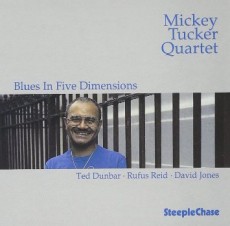
Daily Dose Of Jazz…
Mickey Tucker was born on April 28, 1941 in Durham, North Carolina and began on piano at age six, playing in church when he was young. By the 1960s he was doing studio work with R&B musicians such as Little Anthony & The Imperials, Damita Jo, and accompanying comedian Timmie Rogers, switching to jazz music late in the decade.
In the late ’60s and ’70s Mickey played with Bill Harman, Junior Cook, James Moody, Frank Foster, Roland Kirk, Eric Kloss, Thad Jones, Mel Lewis, Roy Brooks, Eddie Jefferson, Billy Harper, Philly Joe Jones, George Benson,, Willis Jackson and Final Edition.
The 1980s saw Tucker performing with the Art Farmer and Benny Golson group The Jazztet, and with Richie Cole, Phil Woods and Louis Hayes. He would work with Junior Cook, and the Jazztet again in the Nineties as well as with Bob Ackerman.
Pianist Mickey Tucker has released eleven albums as a soloist or leader, and another 10 as a sideman. He moved to Sydney, Australia and is currently pursuing his musical endeavors in jazz as a pianist and organist.
More Posts: piano
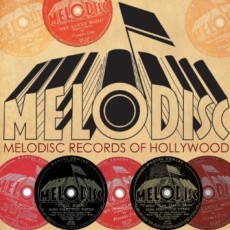
Daily Dose Of Jazz…
Karl Curtis George was born on April 26, 1913 in St. Louis, Missouri. Early in his career he played with McKinney’s Cotton Pickers in 1933, and Cecil Lee. in the 1930s he spent time in the Jeter Pillars Orchestra and then in the orchestras of Teddy Wilson from 1939–40, followed by a year-long stint with Lionel Hampton in 1941.
George served in the Army from 1942 to 1943, then moved to California and played with Stan Kenton, Benny Carter, spent a spring with Count Basie and in Los Angeles with Happy Johnson, his final collaboration of note.
He also played in sessions led by Charles Mingus, Slim Gaillard, Oscar Pettiford, Dinah Washington and Lucky Thompson. During years1945-1946 Karl led his own group on record the track “Peek-A-Boo” by the Karl George Octet, originally released on Melodisc, has been reissued on a Topnotch compilation.
Jazz trumpeter Karl George retired back in his hometown once his health got the better of him, while recordings he had played on continued to be stocked on record store shelves. He lived out the rest of his life in almost total obscurity until passing away in May 1978.
More Posts: trumpet


